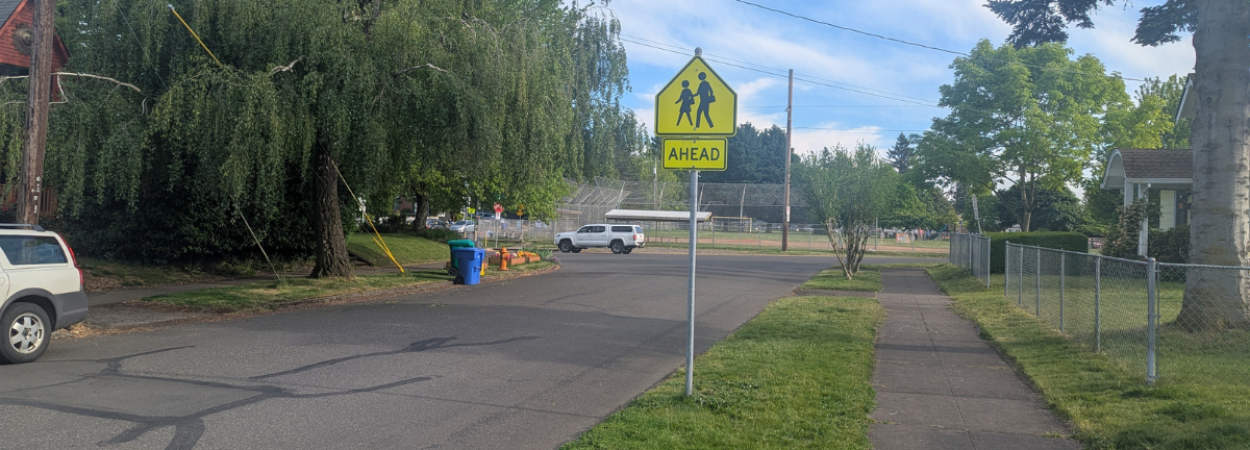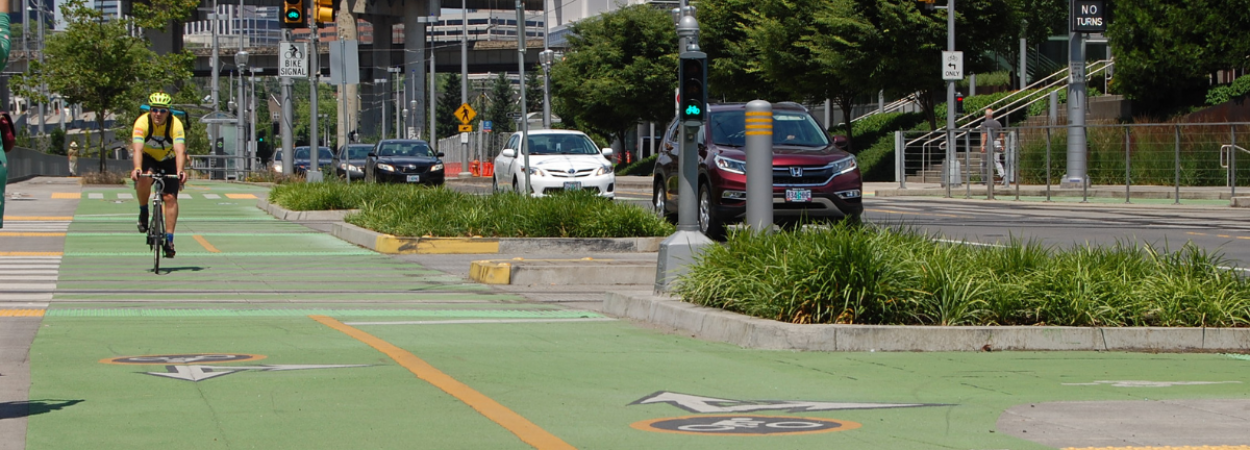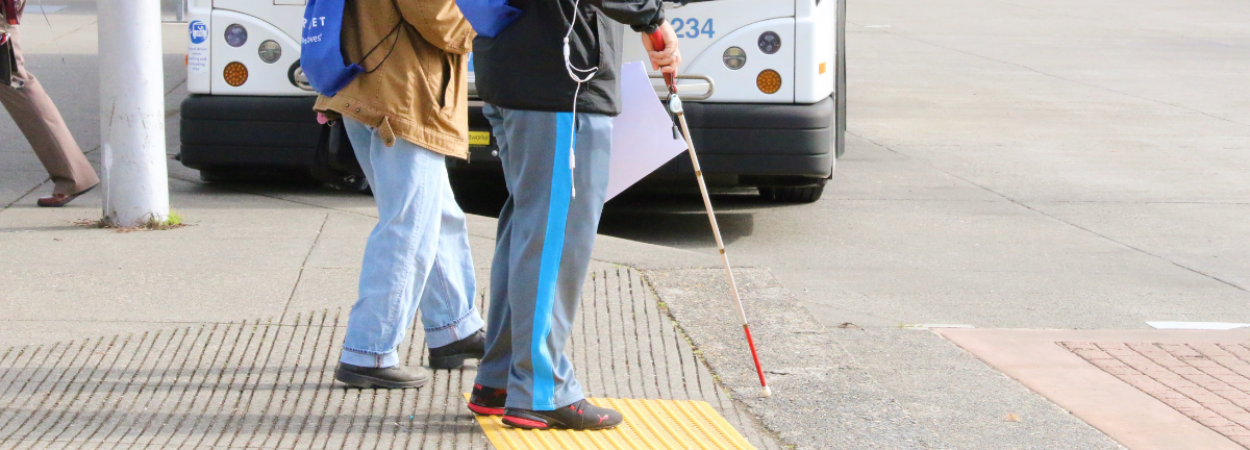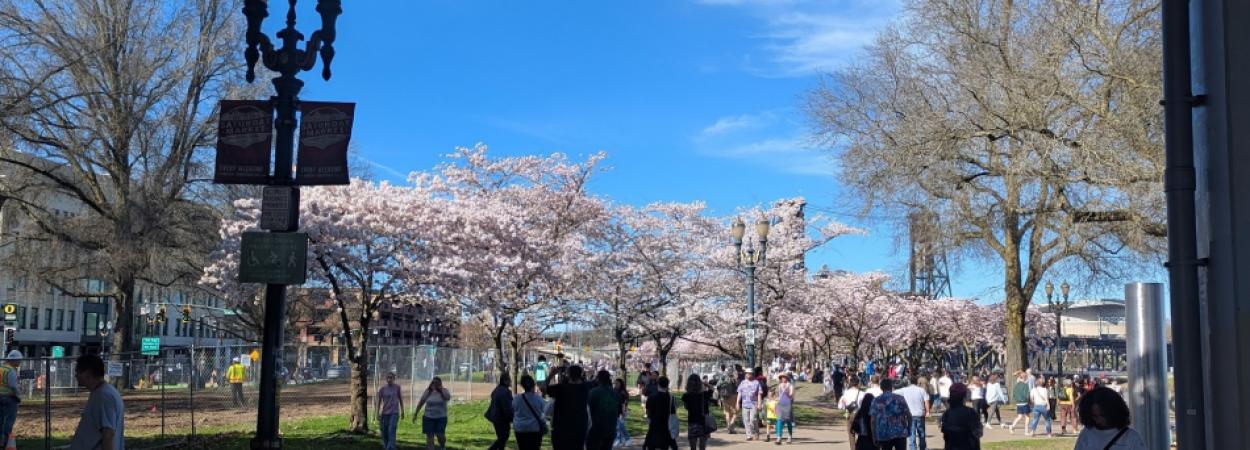 |  |  |

Four new projects took their first steps down the Better Block PSU Project Pathway, this Spring term at Portland State. Submitted by community members, the projects got underway with students beginning to investigate their potential in the Spring 2025 Pedestrian and Bicycle Planning course taught by Drusilla Van Hengel and Ryan Hashagen.
The Better Block PSU program has been getting a bit of attention in recent months, with coverage such as "Dreaming Big Might Mean Starting Small" from the Portland Mercury, a BikePortland article, plus Better Block PDX managing director Ryan Hashagen's presentation, "Let Knowledge Serve The City And Beyond," at The Street Trust's …
Read More
A new resource has been published to help transportation agencies identify key factors that influence the safety of people riding bicycles.
Many cities around the country share the related goals of increasing bike use, improving safety, expanding access and connectivity, and promoting equity. More and more, agencies and communities understand that meeting these goals requires building bike networks that work for people of all ages and abilities, with routes that feel safe and comfortable for everyone.
"On-Street Bicycle Facility Design Features" is a data-driven guidebook created to assist practitioners in selecting appropriate design elements for bicycle infrastructure, depending on the surrounding context.
The report is especially valuable for state and local agencies wishing to enhance safety and expand bicycle ridership, as it provides a framework for choosing the safest, most effective bicycle facility designs for…
Read More
For people who are blind or have low vision, navigating public transportation can be a daunting challenge. Portland State University (PSU) is partnering with TriMet—the transit agency serving the Portland, Oregon metropolitan area—to make it easier.
"Human Wayfinding" is a new collaborative research project funded by TriMet, aimed at helping the agency improve the travel experience for transit riders with low vision.
Amy Parker, coordinator of the Orientation and Mobility (O&M) Program in PSU's Special Education Department, is leading the research. Students studying to be O&M professionals will work with TriMet to provide specialized support to low-vision travelers, using best practices developed by the blind and Deafblind community.
"If more people who are blind can get to where they are going, then that mean…
Read MorePORTAL is the Portland, OR - Vancouver, WA regional transportation data lake project with terabytes of vehicle, transit, bicycle and pedestrian data. Since its inception in 2003, and initial data collection in 2004, it has grown to include data from multiple state and regional agencies. A small team of Portland State University data scientists develop applications and tools based on input. Input is critical to prioritizing questions to answer using data from the traveling public. Priorities were determined through collaborative engagement with agency partners, practitioners, and researchers. Moving forward, our goal is to engage with community representatives and organizations.
The tentative role of the advisory committee is to advise and recommend enhancements to PORTAL. For example, are there data we should be collecting and making publicly available? Are there data that would help inform equitable implementation of tra…
Read More
The Pacific Northwest Transportation Consortium (PacTrans) is the Regional University Transportation Center (UTC) for Federal Region 10, housed at University of Washington (UW). Each year, PacTrans provides PSU with $150,000 to fund “small research projects.” Those projects must be selected using a competitive, peer-review process. The Year 3 Request For Proposals (RFP) is open now. PSU plans to award no more than three projects. Therefore, individual project requests should range from $30,000 to $70,000.
Abstracts are due May 6, with full proposals due June 3, 2025.
Download the RFP and other relevant documents, and find instructions for how to submit a proposal, on the PSU PacTrans page.
Portland State University's Transportation Research and Education Center (TREC) is a multidisciplinary hub for all th…
Read More